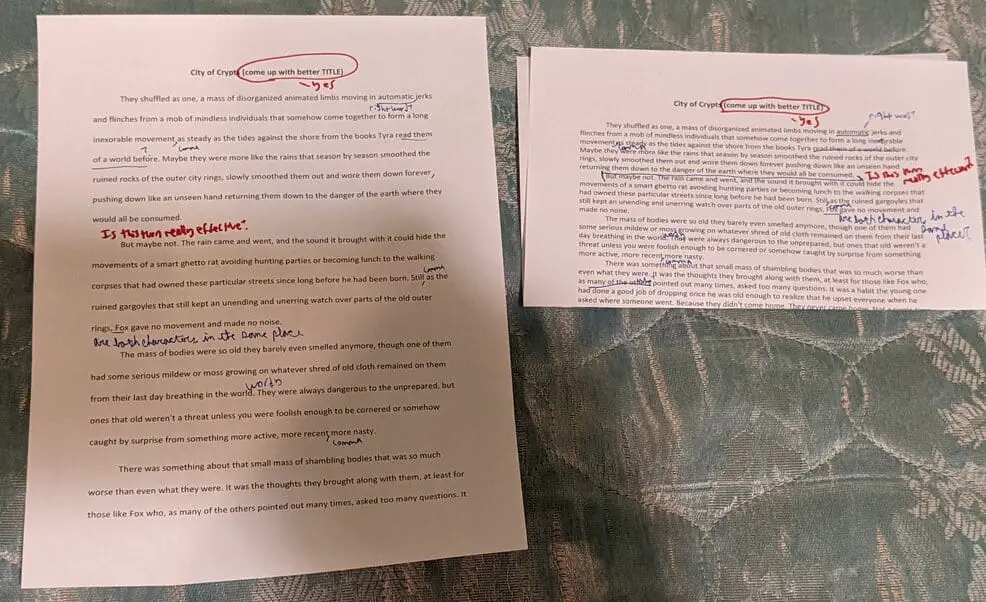Books have been around for centuries, but sometimes it’s the little questions that just hit us as fascinating. One of those big questions is: are books double spaced?
Printed books are single spaced but authors submitting manuscripts should always have their book manuscripts double spaced unless otherwise directed. These are the standard practices for book publishing.
For printed books there’s concern about expenses plus readers are used to reading single spaced text, so that just makes sense. However, book manuscripts go to readers and editors and having it double spaced makes for fast reading as well as writing in notes.
This is why there is a different standard for spacing whether the book manuscript is being processed or the final published book is there.

Why Do People Think Published Books Are Double Spaced?
Hard to say. However, a likely culprit is average word count. When you look at the average number of words on a paperback book that’s been published, it’s often similar or the same as the number of words on a Microsoft Word page when it is double spaced, at least for the smaller paperbacks.
Then again, unless you’re a writer or MFA student, this probably isn’t a detail that has come up all that often.
Why Do Publishers Want Manuscripts Double Spaced?
Double spacing has long been the standard. While at first there was some space between lines due to needing space for a printing press to work correctly and without error, the standard has stayed long after that was no longer necessary.
There’s a big reason for double spacing at that’s just legibility. Look at the picture above. It’s not only much easier to see which one can be edited, have comments or feedback left at appropriate and organized places compared to the other, but it’s also obvious which one is easier to read. Faster to read.
That’s good to know.
Double spacing gives the benefits of:
- Sticking to the industry standard for manuscripts
- Making the text much easier to read
- Keeping requirements for manuscripts standard
- Makes it easier to get feedback
Single spacing in published books gives the benefits of:
- Easy to read
- Saves publishers money
- Easy for readers to digest
This makes the answer to the question simple: book manuscripts are always double-spaced with no additional spaces between paragraphs while all books are single-spaced with no additional spaces between paragraphs.
Other Articles You Might Enjoy
